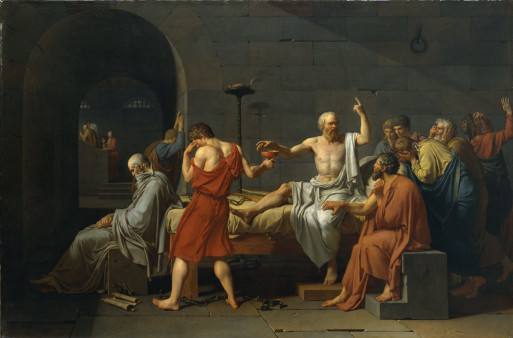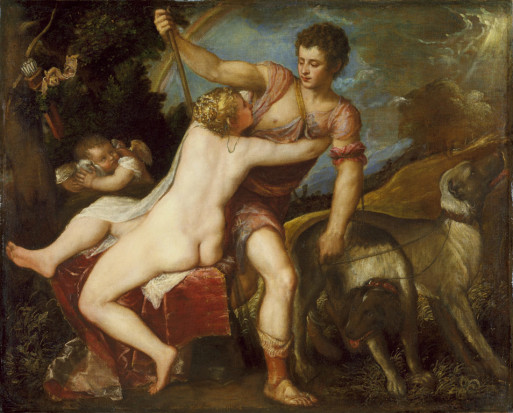Andrea Bayer is a curator in the department of European paintings at the Metropolitan Museum of Art in Chicago. About two years ago, both of her elderly parents died within the same year. On the museum’s website, she discusses and illustrates how she found mirroring and meaning in her parents’ passing through the works of well-known painters.
In Jacques-Louis David’s The Death of Socrates (1787), she observes the wide array of emotions that are commonly experienced by those who are upon their deathbed, as well as by those who are witness to it. Despair, outrage, defiance and weary resignation are all present here. Similarly, in Rembrandt’s Sheet of Studies with a Woman Lying Ill in Bed (1641/42), the central figure is surrounded by many other figures, and yet seems isolated in an altered state. The experience of the dying person is thus related to the experience of one who is bereaved. Bayer recalls feeling inward-turned in the midst of the crowd at both of her parents’ funerals, as if she was cloaked in a big hood.
However, Bayer seems to find funerals to be life-affirming in the way they gather people together. Although the gathering is to grieve a death, it is also to appreciate the fullness of life through the lens of its inevitable end. The exuberance of Romare Bearden’s The Block (1971) illustrates this with its bright primary colors and many active figures. The Block also offers a view of death as liberation, depicting several winged figures ushering the recently departed up into the ether in a burst of color. Something to celebrate, indeed.
And yet, for everything there is to celebrate, the pain of loss is very real. In Venus and Adonis by Titian, Bayer reflects on the agony of separation, wondering aloud that “almost all of us have loved someone the way Venus loves Adonis.” In this charged moment of longing at the moment of division, there we see love, lust, life and death intertwined in an emotionally messy but visually beautiful way, with the dogs at bottom left looking both forward and back; the clouds shift from clear sky to a storm. Yet Cupid presides over the scene with his bow and arrow, the proverbial pot of gold at the end of the rainbow — a reminder that love is a powerful universal element, and a constant factor in our ever-shifting world. It is this kind of beauty that inspires us to seek love, to make meaning, to be deeply engaged in the present moment despite the endings of things. It represents being fully human and alive, because we all must die.

 Met Curator Explores Her Personal Grief Through European Paintings
Met Curator Explores Her Personal Grief Through European Paintings






 Our Monthly Tip: Make an “In Case of Death” File to Ease Loved One’s Grief
Our Monthly Tip: Make an “In Case of Death” File to Ease Loved One’s Grief
 Passing of Beloved Comedian Births a New Comedy Festival
Passing of Beloved Comedian Births a New Comedy Festival















